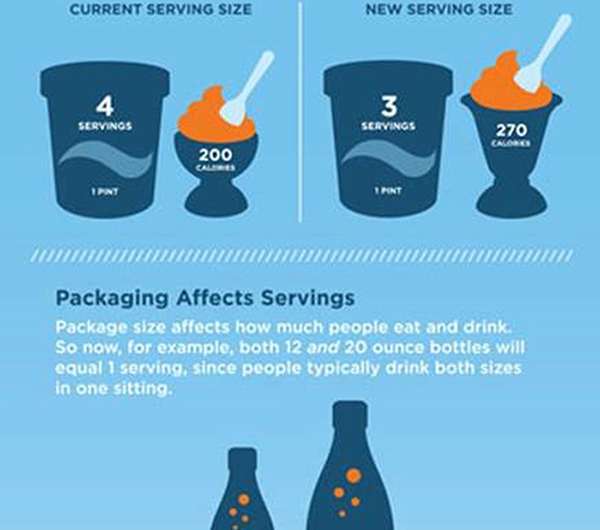Nutrition expert says new food labels will show real calorie picture

Sabrina Trudo, a registered dietitian and associate professor of human nutrition in the University of Arkansas' Dale Bumpers College of Agricultural, Food and Life Sciences, says upcoming changes to nutrition facts on food labels will make it easier for consumers to find how many calories they are eating.
The U.S. Food and Drug Administration announced last month that most packaged foods sold in the country will include new nutrition labels so consumers can make more informed decisions regarding what they eat.
Most manufacturers will be required to use the new labels by July 26, 2018. Manufacturers with less than $10 million in annual food sales will have an additional year to comply with the new rules.
"The design has been revised a bit with the type larger for the words 'calories,' 'servings per container' and 'serving size,'" said Trudo, who holds the 21st Century Endowed Chair in the Bumpers College's School of Human Environmental Sciences. "The number of calories and 'serving size' will be in bold type. Serving sizes are supposed to reflect the amount people typically eat since portion sizes have increased over the years. There is the notion that package size affects how much people eat. For packages containing between one and two servings, calories and other nutrients will be labeled as from one serving because people typically consume the whole package in one sitting."
The last serving size requirements were published in 1993. By law, the Nutrition and Labeling Act requires serving sizes to be based on what people actually eat.
The new rules will also require that labels show the grams and percent of daily value for "added sugars" to help consumers know how much sugar has been added to products.
"This change could help people avoid excess calories that don't bring needed nutrients," said Trudo. "I'm also hoping this will help people recognize foods containing fresh fruit or milk are not inherently bad because they contain sugar. Many healthy foods contain natural sugars, and that's fine. These aren't the same as a product that has several grams of sugars added, perhaps unnecessarily, to crank up sweet perception, and unavoidably, calories."
Other changes include:
- Dual columns for both "per serving" and "per package" calorie and nutrition information for certain multi-serving food products that could be consumed in one or multiple sittings.
- Updated daily values for nutrients such as sodium, dietary fiber and Vitamin D that will be consistent with Institute of Medicine recommendations and the 2015-2020 Dietary Guidelines for Americans.
- Declaration of Vitamin D and potassium that will include the actual gram amount in addition to the percent of daily value.
- Amounts of vitamins A and C will no longer be required in the labeling because deficiencies are rare in modern diets.
- "Calories from Fat" will be removed because research shows the type of fat is more important than the amount. "Total Fat," "Saturated Fat" and "Trans Fat" will continue to be required.
- A footnote to better explain the percent of daily value.
"Personally, I've had a problem with how serving sizes have been listed on labels," said Trudo. "For example, the serving size for ice cream is listed as a half cup. Go to your kitchen and closely look at a half cup. Few people eat only a half cup in one sitting. I think it was unrealistic to expect people to adjust portion sizes down to equal what is currently listed on a package. We can hope when the new labels come out, people think twice and make better choices when they see calorie amounts that more closely reflect what they get in typical portion sizes they've been eating. Most of us don't make the time to measure portions to ensure they are what we think they are. Hopefully these changes will help in weight maintenance and weight loss efforts."
The Nutrition Facts label was introduced more than 20 years ago. Label regulations apply to packaged foods except certain meat, poultry and processed egg products, which are regulated by the U.S. Department of Agriculture's Food Safety and Inspection Service.
"Nutritional science is a young and evolving science," said Trudo. "We know more now than we did 20 years ago. Eating habits have changed, particularly with enlarging portion sizes over the years. The label should be updated to reflect the current state of knowledge, and current dietary patterns and challenges."
Trudo said the labels will be most noticeable on products in a box, plastic container or can, such as snack foods, cereal, dairy products, soups, frozen meals and frozen pre-cooked foods.
















